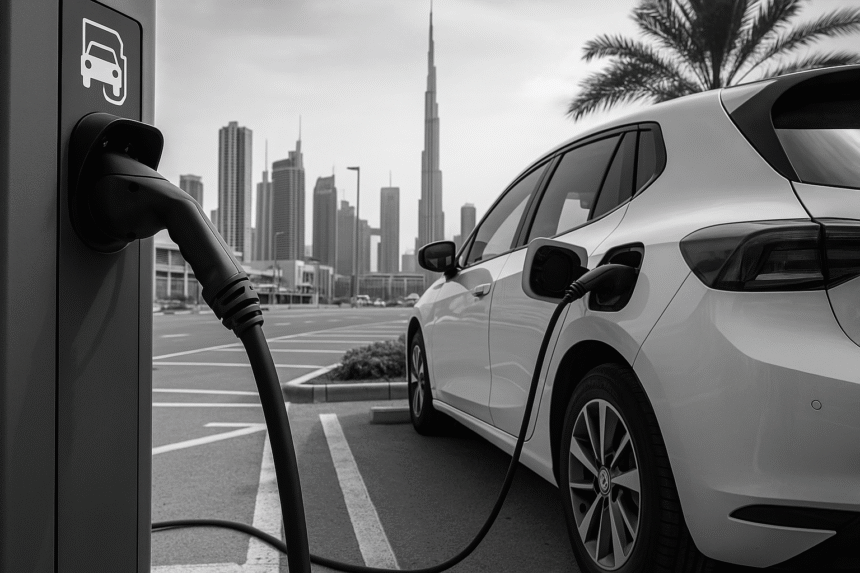EV Charging in the UAE: Costs, Models, and Public Access
As electric vehicles become more common on UAE roads, questions around accessibility, costs, and technology surrounding EV charging in the UAE are becoming more relevant than ever—especially for infrastructure providers, developers, and business executives planning for the next wave of mobility.
This blog explores who operates public charging stations, the revenue models behind them, current regulatory practices, and how emerging technologies are reshaping the user experience and operational efficiency.
Who Operates Public EV Charging Stations in the UAE?
The UAE’s public EV charging network is growing rapidly. This expansion is driven by a mix of government authorities and licensed private operators.
Key players include:
-
DEWA (Dubai Electricity and Water Authority) through its Green Charger initiative, responsible for installing and managing hundreds of charging points across Dubai.
-
ADNOC Distribution, which has begun rolling out EV chargers at selected service stations across Abu Dhabi.
-
Private Charge Point Operators (CPOs) like Shabik, who install and manage chargers in residential buildings, commercial complexes, and hospitality venues under private contracts.
-
Shopping malls and real estate developers, such as Majid Al Futtaim and Emaar, who integrate EV charging as a value-added service in retail and mixed-use environments.
In most cases, operation models are hybrid: government-backed infrastructure is maintained by either the authority or contracted private firms.
Revenue Models: Free, Paid, and Hybrid Approaches
When it comes to EV charging UAE pricing models, there is no one-size-fits-all. Here’s how different setups work:
1. Free-to-Use Models
Often found in:
-
Public buildings or government facilities
-
Early pilot projects
-
Promotional launches (e.g., mall parking areas)
Used primarily to incentivize EV adoption, these stations are subsidized either by the government or by landlords aiming to attract foot traffic.
2. Paid Charging Models
These are now becoming the norm:
-
Per kilowatt-hour (kWh) pricing
-
Time-based charging (especially for fast/ultra-fast chargers)
-
Variable rates depending on location and time of day
Payment is typically handled through apps or RFID cards linked to customer accounts.
3. Hybrid Models
Some landlords or building operators offer the first hour free, then apply charges. Others subsidize charging only during off-peak hours.
The challenge lies in balancing return on investment with user affordability—a factor directly influencing charger utilization rates.
Government Regulation and Licensing
The operation of public EV charging stations in the UAE is tightly regulated to ensure safety, efficiency, and alignment with national energy and mobility goals.
Key regulatory touchpoints:
-
DEWA in Dubai issues technical guidelines for charger types, installation, and grid connection.
-
ADDC (Abu Dhabi Distribution Company) has its own procedures for charger approvals and integration with grid infrastructure.
-
TRA (Telecommunications Regulatory Authority) oversees the use of data-sharing and software-based platforms linked to smart mobility.
-
UAE Ministry of Energy and Infrastructure sets national standards on interoperability and sustainability.
Licensing is required to operate as a CPO, with specific documentation covering safety compliance, insurance, power demand plans, and in some cases, integration with smart grid technologies.
Emerging Tech: Smart Charging, Apps, and Billing Innovation
The UAE’s EV ecosystem isn’t just about plugging in—it’s also about digital transformation.
Technology trends reshaping EV charging in the UAE:
-
Mobile apps for real-time charger location, availability status, booking, and payment (e.g., DEWA app, Shabik Charge).
-
Load balancing software that manages energy flow across multiple stations to prevent grid overload.
-
Smart billing systems that enable dynamic pricing, peak-hour surcharges, and prepaid or subscription-based access.
-
Data analytics dashboards for landlords and station owners to monitor charger usage and revenue.
These innovations create a smoother user experience while improving operational decision-making for station operators.
What CEOs and Infrastructure Leaders Should Know
For business leaders, entering the EV charging space means thinking beyond hardware. It’s about creating a long-term ecosystem that aligns with public policy, user demand, and financial viability.
Here’s what to keep in mind:
-
Location strategy matters: Sites with predictable footfall (e.g., malls, offices, housing clusters) yield better charger utilization.
-
Licensing and DEWA/ADDC coordination is non-negotiable. Understanding these frameworks early accelerates time-to-market.
-
Technology partnerships with payment providers, app developers, and software firms can significantly enhance competitiveness.
-
Revenue model planning must be tailored to each installation context.
Conclusion: Charging the Future, One Station at a Time
EV charging in the UAE is evolving fast—from government-managed pilots to smart, app-driven commercial networks. For investors, property developers, and urban planners, this isn’t just about offering charging points—it’s about enabling a smarter, cleaner transportation future.
Aligning with regulators, choosing the right business model, and adopting emerging tech can set your project apart.



Leave a Reply